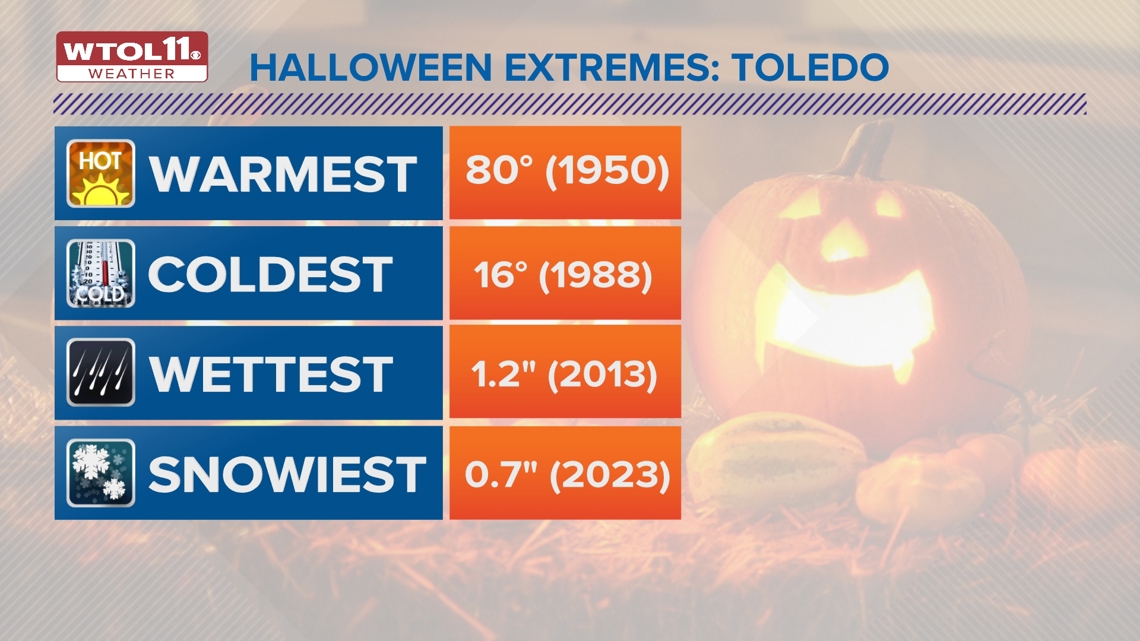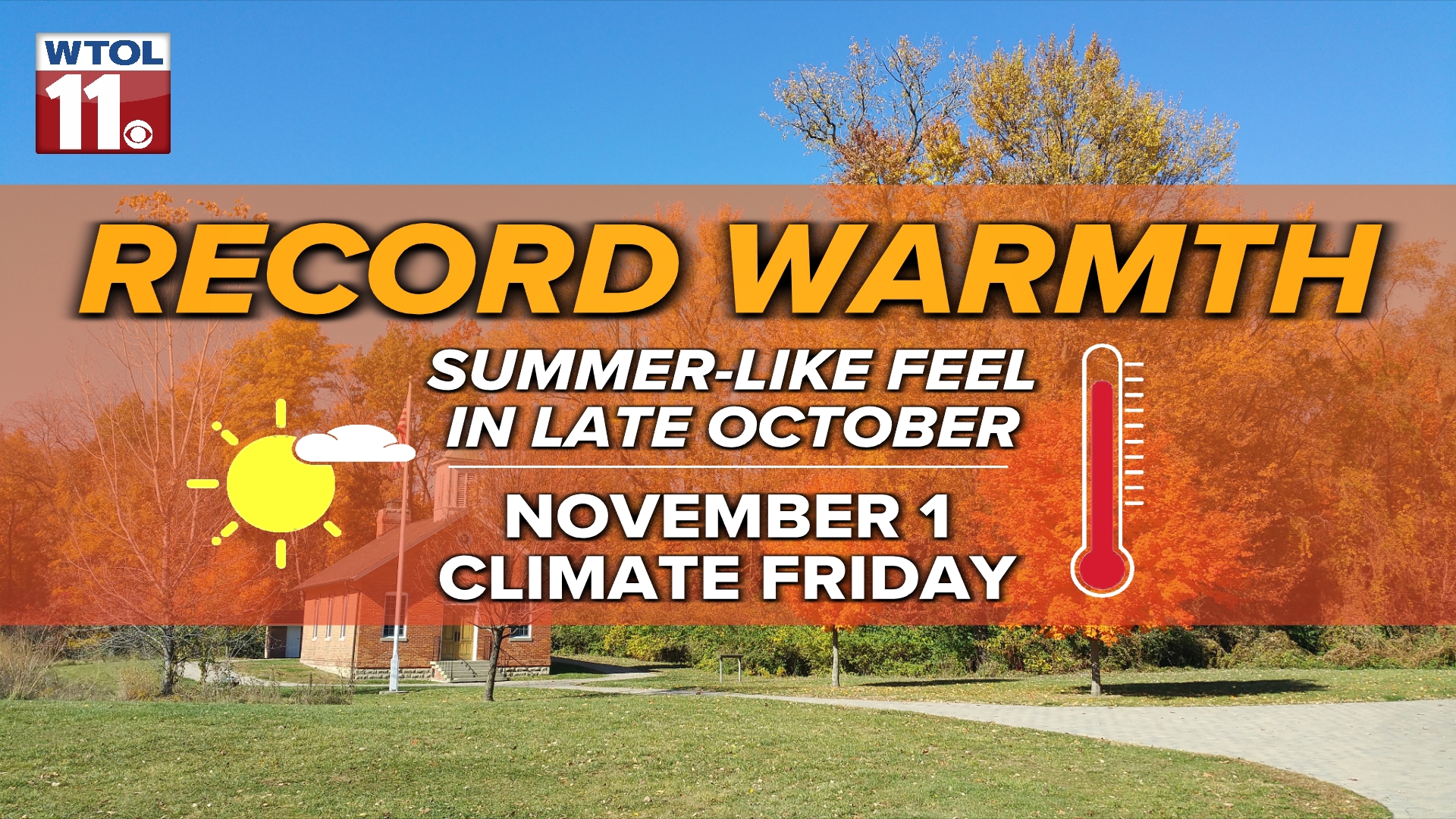TOLEDO, Ohio — While the end of October typically brings chilly fall weather, this month ended with a summer-like feel. With two record high temperatures and three days in the upper 70s, the final week of October dosed out unseasonable warmth for much of the region.
After a warm Halloween, temperatures will plummet into the start of November. In this week's edition of Climate Friday, Meteorologist John Burchfield breaks down the numbers behind this week's record warmth.
Though the week started off relatively seasonable with a high temperature of 64 degrees on Monday, a strong southwest flow in the atmosphere ushered in warm weather for the Midwest. Temperatures Tuesday topped out at 79 degrees, breaking the previous record high of 78 degrees. Wednesday followed suit with another record high of 79 degrees, beating the previous high of 77 set on Oct. 30, 1971 by an even greater margin.


Warm weather was a Halloween treat for many enjoying the last taste of summer. Temperatures maxed out at 77 degrees, falling shy of the record Halloween temperature of 80 set on Oct. 31, 1950. Not only did Toledo experience a pair of record highs this week, but much of the nation experienced unseasonable warmth. In the past seven days, over 1000 record high temperatures have fallen across the country. In the past month, over 6000 record highs have been shattered nationwide.
Though these individual records are the product of the recent weather pattern, they reflect the fingerprint of climate change as extreme warmth grows more common.
So how has climate change impacted fall weather? Nationwide, fall temperatures have risen by an average of 2.5 degrees since 1970. This warming trend has been even more evident in overnight low temperatures, which have risen by an average of 3.3 degrees in the past half century.


Warmer nights have impacted fall foliage across the country, delaying the onset of autumn color. Cool, crisp nights enable fall colors to turn vibrant as the production of chlorophyll, the pigment responsible for the green color in leaves, gradually ceases. Milder nights trick trees into thinking summer is still in full swing, thus enabling continued chlorophyll production well into late October.
Warm overnight low temperatures can delay and even dull the fall foliage season, especially if these mild nights are followed by extreme weather on the other side of the spectrum such as early season snowfall or a hard freeze.


In general, fall weather is growing milder as a result of climate change. This week provides evidence of trend, and two record high temperatures plus a very mild Halloween represent the impacts of global warming. After a warm week, cooler conditions will return to kick off November.
Stay tuned and subscribe to the Climate Friday Newsletter as we round the corner from fall into winter in the next couple months!

